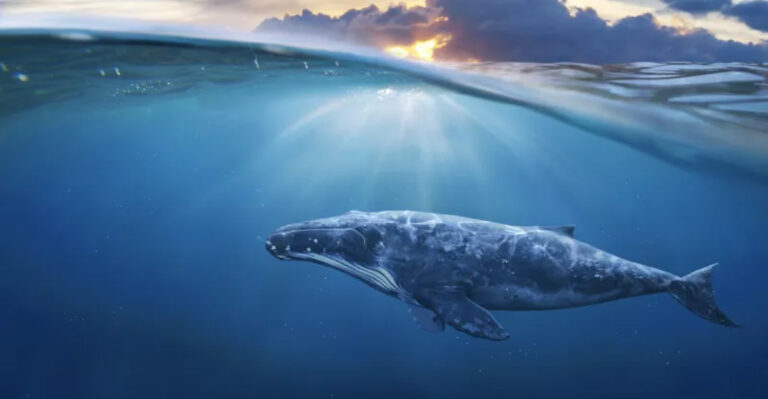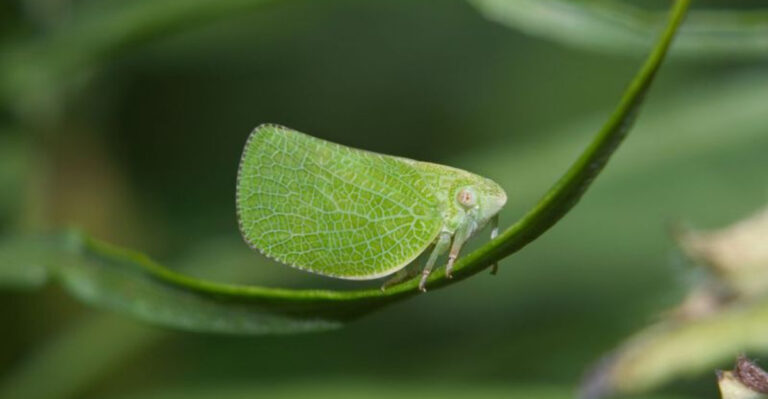14 Unbelievable Facts About The Frilled Shark’s Ancient Existence
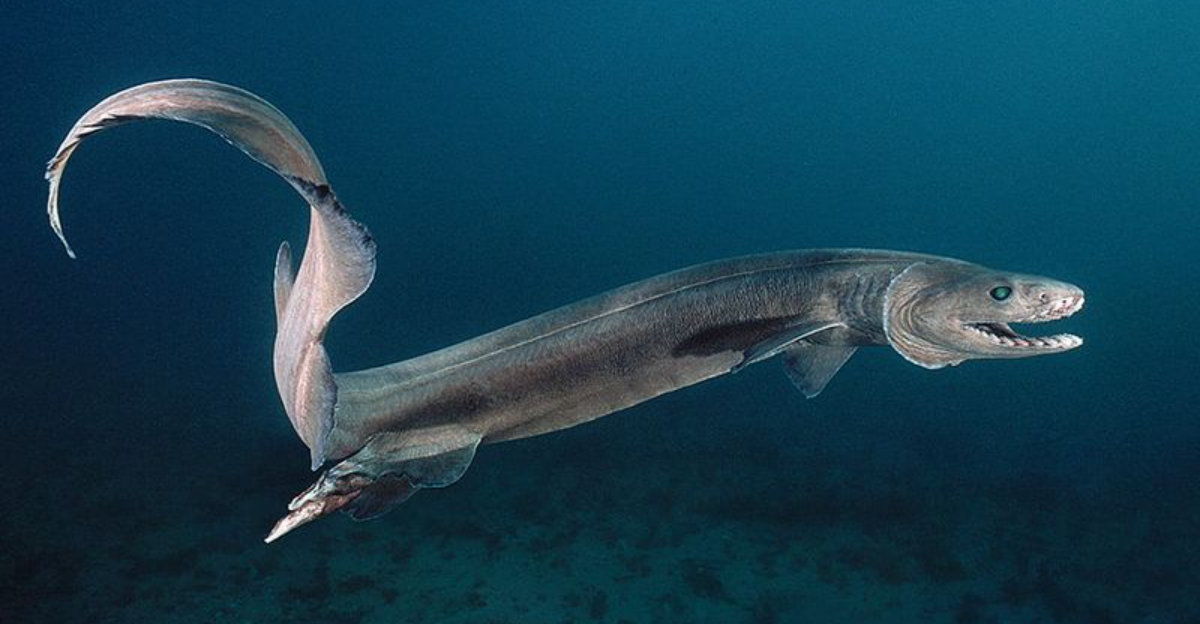
Lurking in the deep ocean’s darkest corners swims a creature that seems plucked straight from prehistoric times.
The frilled shark, with its snake-like body and 300 needle-sharp teeth, has barely changed in nearly 80 million years.
Often called a ‘living fossil,’ this mysterious predator offers scientists a rare glimpse into Earth’s ancient oceans.
1. Nightmare Smile
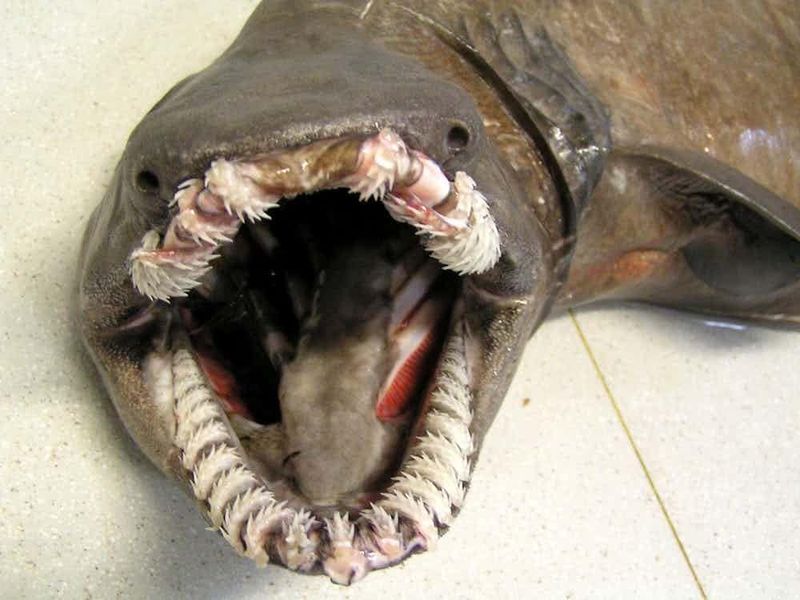
Peek inside a frilled shark’s mouth and you’ll count about 300 trident-shaped teeth arranged in 25 rows. Unlike other sharks that regularly shed teeth, these creatures keep theirs longer.
Each tooth features three needle-like points designed to trap slippery prey. Once something enters that mouth, escape becomes nearly impossible.
2. Serpent Of The Deep
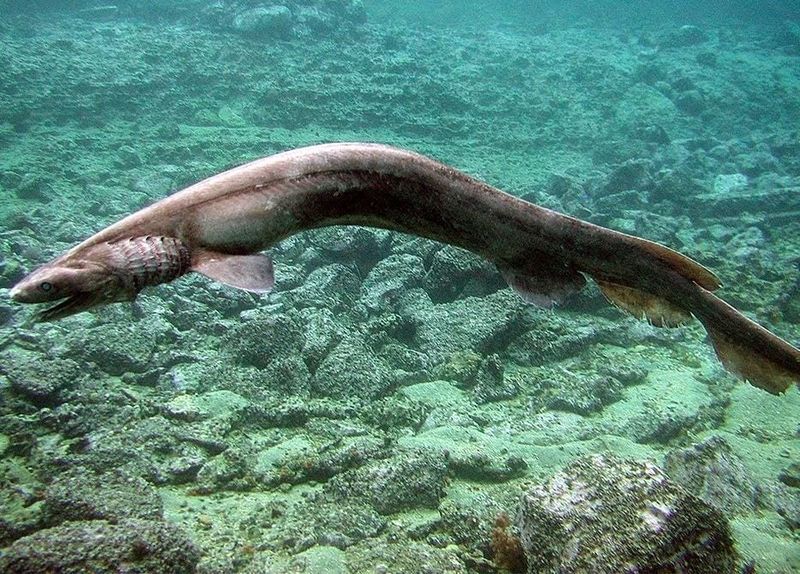
Most people wouldn’t recognize a frilled shark as a shark at all. With an eel-like body stretching up to 6.5 feet long, these creatures glide through water like sea serpents.
Their unusual body shape allows them to twist and bend through tight spots where more rigid sharks can’t follow. Ancient sailors might have mistaken them for sea monsters!
3. Time Capsule With Fins
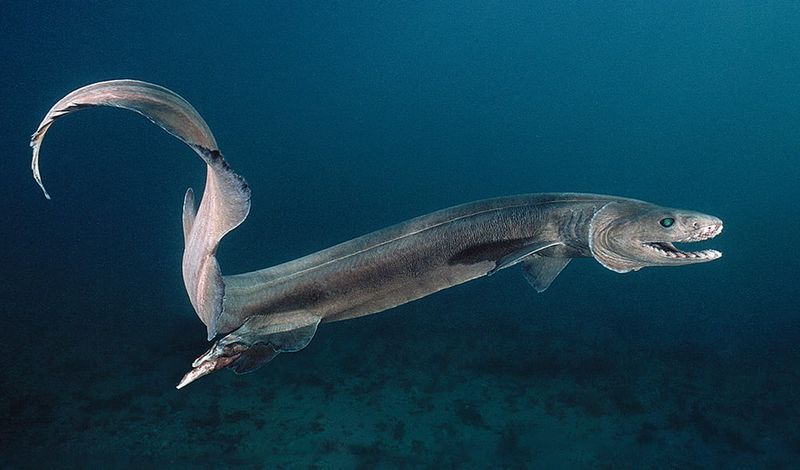
Swimming through today’s oceans with barely a change since dinosaurs roamed Earth, frilled sharks are marine time travelers. Their body design has remained virtually identical for 80 million years.
While other species evolved dramatically, these deep-sea dwellers found their ancient blueprint perfect for survival.
4. Deep-Sea Ghost
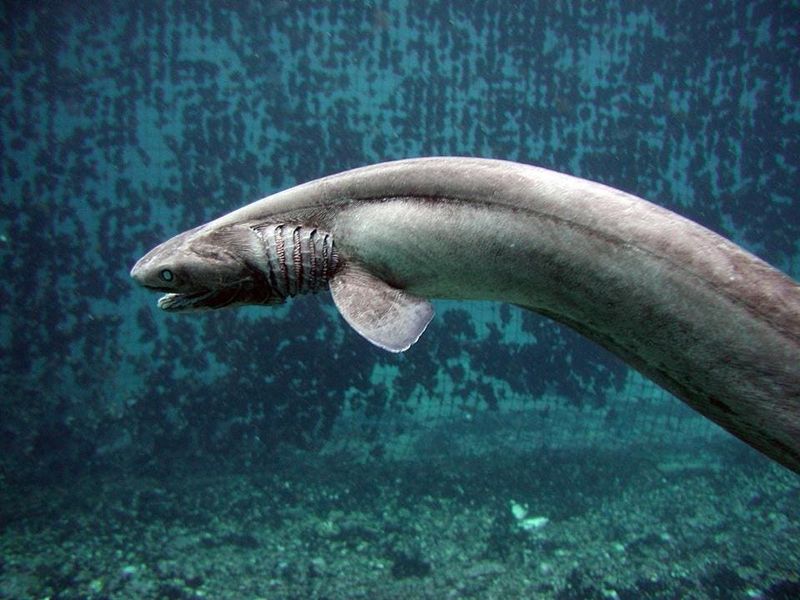
Haunting depths between 390 and 4,200 feet below the surface, frilled sharks rarely encounter humans. Their habitat preference explains why they remained unknown to science until 1884.
Most specimens are discovered only when they venture into shallower waters while sick or dying. Their normal realm remains largely mysterious and unexplored.
5. Frilly Fashion Statement
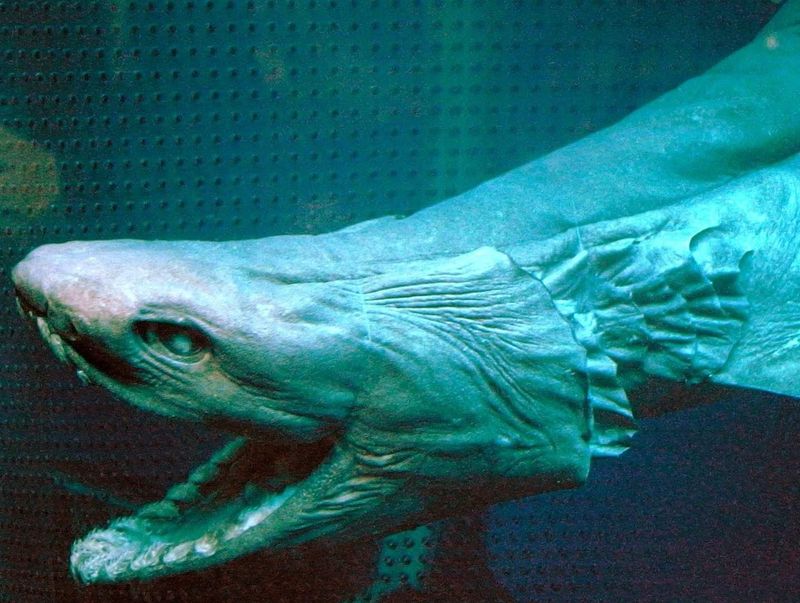
The shark’s namesake comes from six pairs of frilly gill slits adorning its neck. Unlike most sharks with five gill pairs, this extra set creates a distinctive ruffled collar appearance.
These frills aren’t just for show – they contain gill filaments with massive surface area for extracting oxygen from water. This efficient breathing system helps them thrive in oxygen-poor environments.
6. Marathon Pregnancy
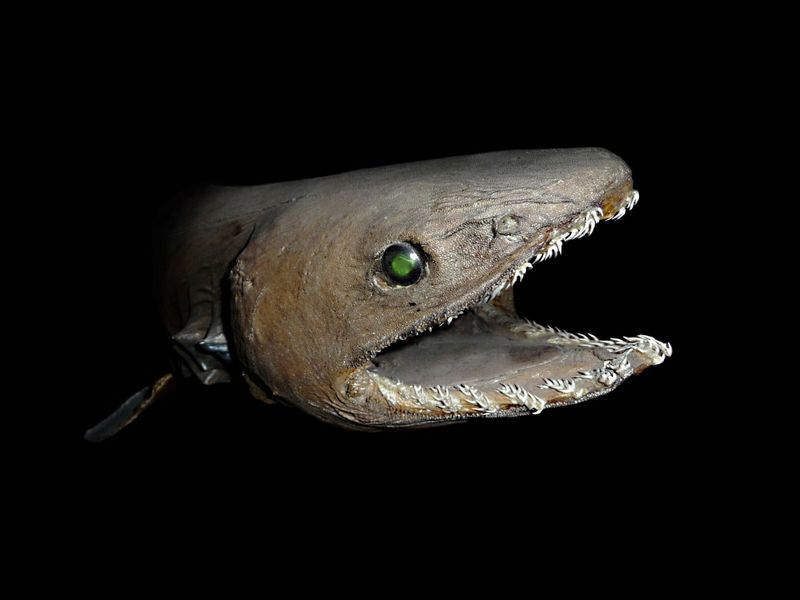
Female frilled sharks endure one of the longest pregnancies in the animal kingdom – a staggering 3.5 years! This marathon gestation period far exceeds the 9-month human pregnancy.
They typically deliver 2-15 live pups, each already equipped with those trademark teeth. Scientists believe this lengthy development ensures babies are well-developed enough to survive in harsh deep-sea environments.
7. Ambush Hunter
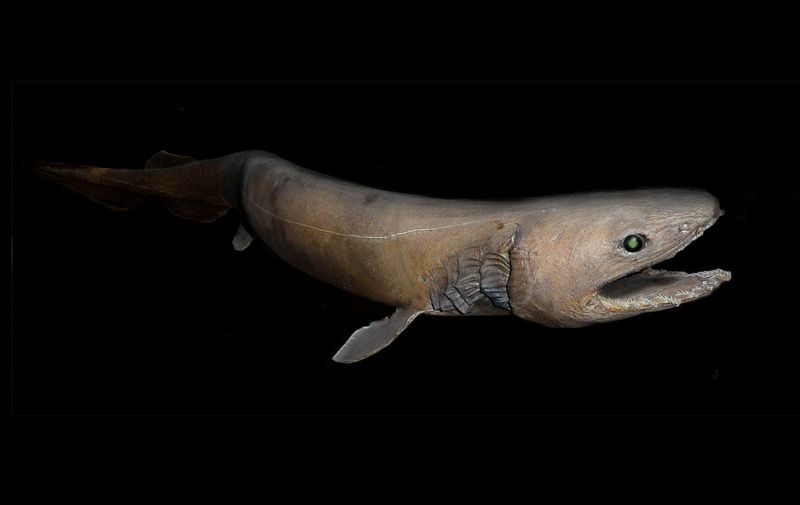
Forget the high-speed chases of great whites – frilled sharks are patient ambush predators. Their dark coloration and slow, undulating movement make them nearly invisible in the depths.
When prey ventures close, they strike with surprising speed, bending their flexible bodies into a spring-like coil before lunging forward. Their hunting strategy hasn’t needed updating for millions of years.
8. Evolutionary Goldilocks
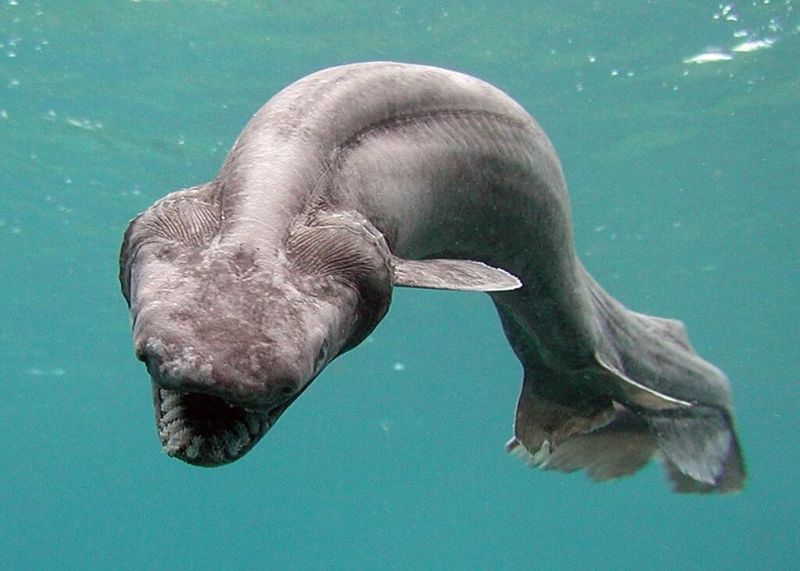
Scientists consider frilled sharks evolutionary “just right” specimens. They’re not quite as primitive as some fossil sharks but retain more ancient features than modern species.
This middle-ground position makes them invaluable for understanding shark evolution. They represent a crucial transitional form that helps researchers piece together the shark family tree.
9. Unexpected Dinner Menu
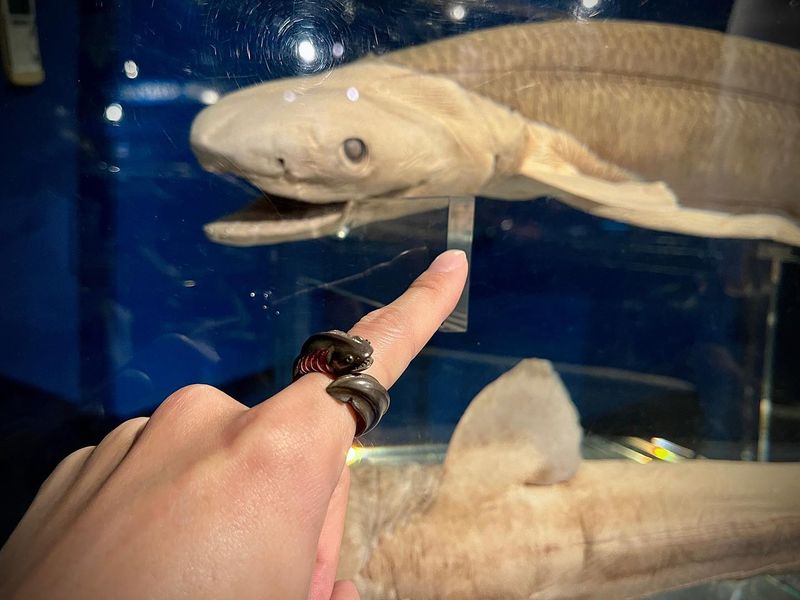
Stomach content studies reveal frilled sharks have unusual dining preferences. They frequently feast on squid, including giant squid pieces, despite lacking the speed typically needed to catch such prey.
Researchers believe they may target injured or dying squid, or perhaps ambush them during vulnerable moments. They also dine on other sharks and bony fishes when opportunity strikes.
10. Mysterious Mating Rituals
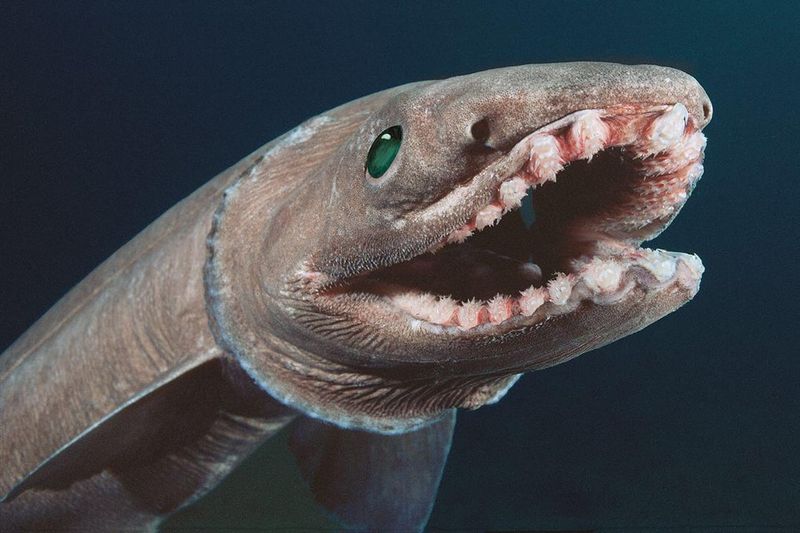
Almost nothing is known about how frilled sharks court and mate. Their deep-sea habitat makes observation extremely difficult, leaving scientists to piece together clues from rare specimens.
Like other sharks, males have claspers for transferring sperm, but the actual mating behavior remains one of the ocean’s best-kept secrets. The extreme depth and darkness shield their private moments.
11. Liver Flotation Device
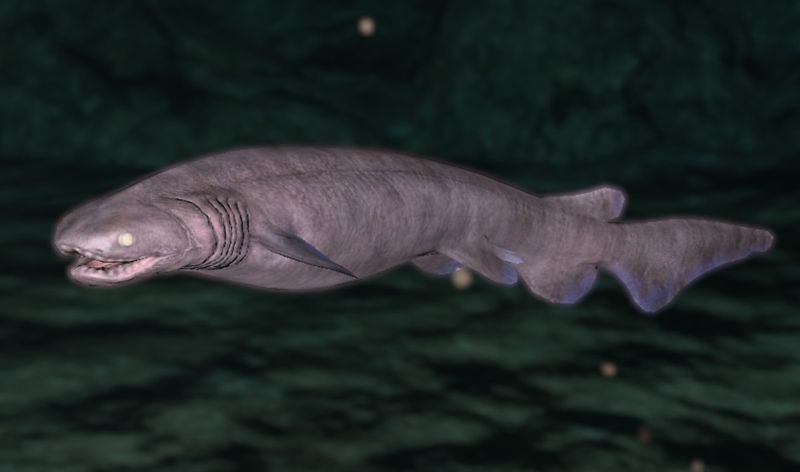
Lacking a swim bladder, frilled sharks rely on their enormous oil-rich livers for buoyancy. This organ can comprise up to 25% of their total body weight!
The liver’s high concentration of low-density oils provides just enough flotation to keep them from sinking. This ancient buoyancy system predates the more advanced swim bladders evolved by bony fishes.
12. Rarely Seen Alive
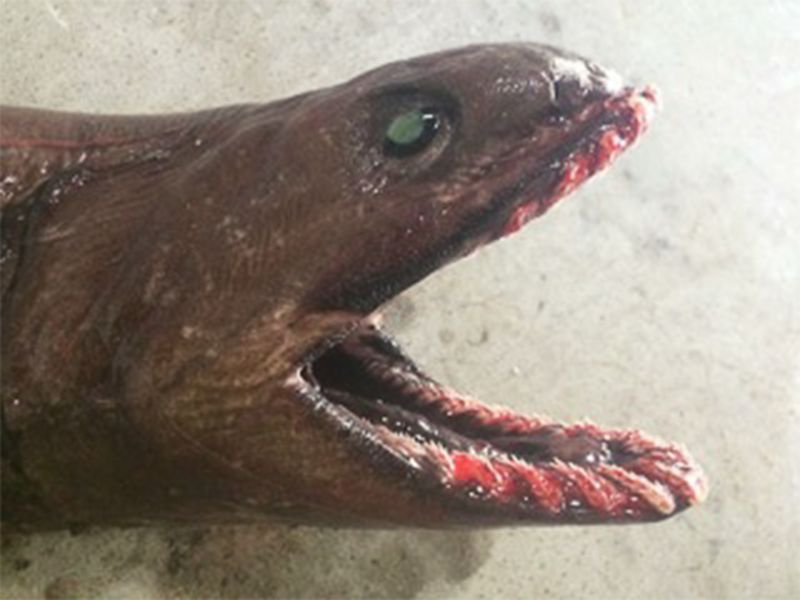
Most scientific knowledge about frilled sharks comes from dead specimens caught accidentally in fishing nets. Live observations remain extremely rare even for dedicated marine researchers.
In 2004, a Japanese team captured the first clear footage of a living frilled shark in its natural habitat. The video revealed its unusual swimming pattern – more eel-like than typical shark movements.
13. Global Ghost
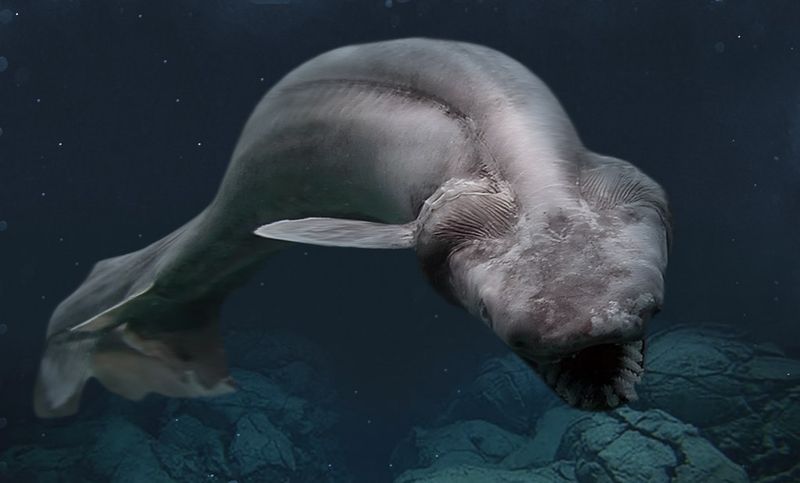
Despite their elusive nature, frilled sharks have a surprisingly wide global distribution. They’ve been found in waters off Japan, Australia, New Zealand, South Africa, Chile, and even parts of Europe.
This widespread presence suggests they once dominated ancient oceans worldwide. Today, they’re scattered remnants of that former abundance, hiding in deep-water pockets across different oceans.
14. Conservation Question Mark
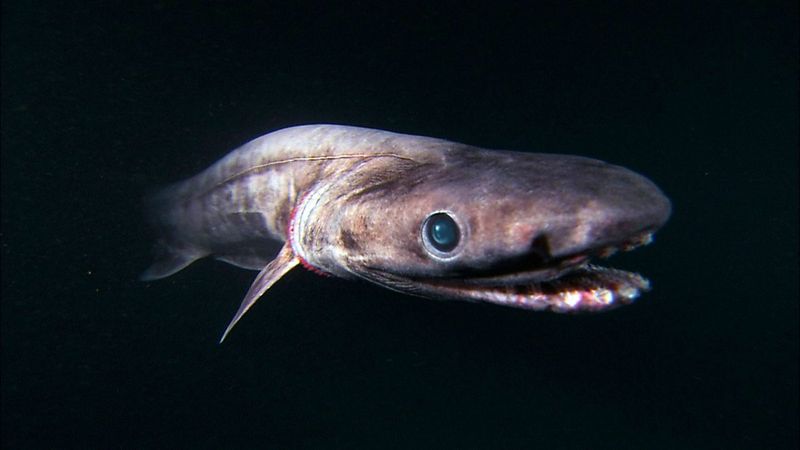
Scientists struggle to assess frilled shark population numbers due to their deep-sea lifestyle. The International Union for Conservation of Nature lists them as “Least Concern” mainly from lack of data.
Their slow reproduction rate makes them vulnerable to overfishing. As deep-sea trawling increases, these ancient creatures face modern threats before we’ve fully understood them.


